Introduction
Do you know what happens to listings that stay stuck on the fifth page of Amazon? Not much, that’s the problem.
You want sales, and you probably want them to start happening organically. Unless you have an unlimited ad budget, you’re going to need to understand Amazon SEO. Without Amazon SEO, your products aren’t going to be found by Amazon shoppers.
This article will walk you through Amazon SEO and tell you what you need to know for 2022. Let’s start with understanding what is Amazon SEO, and how does it work.
What is Amazon SEO, and How Does It Work?
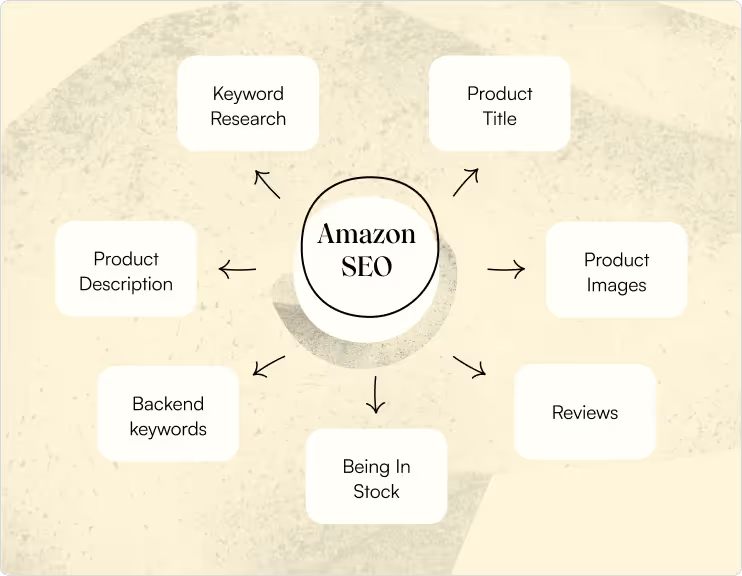
Amazon SEO revolves around keywords, like most search engines.
Keywords are how you get discovered by customers.
If you don’t get discovered, you don’t get sales. It’s as simple as that.
And Amazon prides itself on providing the most relevant results to their customers’ searches.
In a nutshell, the algorithm matches the search term entered by the customer with the keywords in your product listing to show the right products to the right shoppers.
Probably the best way to thoroughly explain SEO, though, is to see it in action from a potential customer’s point of view.
It all starts at the top of the page with the search term bar. A customer enters a query for a product they’re searching for, which Amazon links to your product listing keywords.
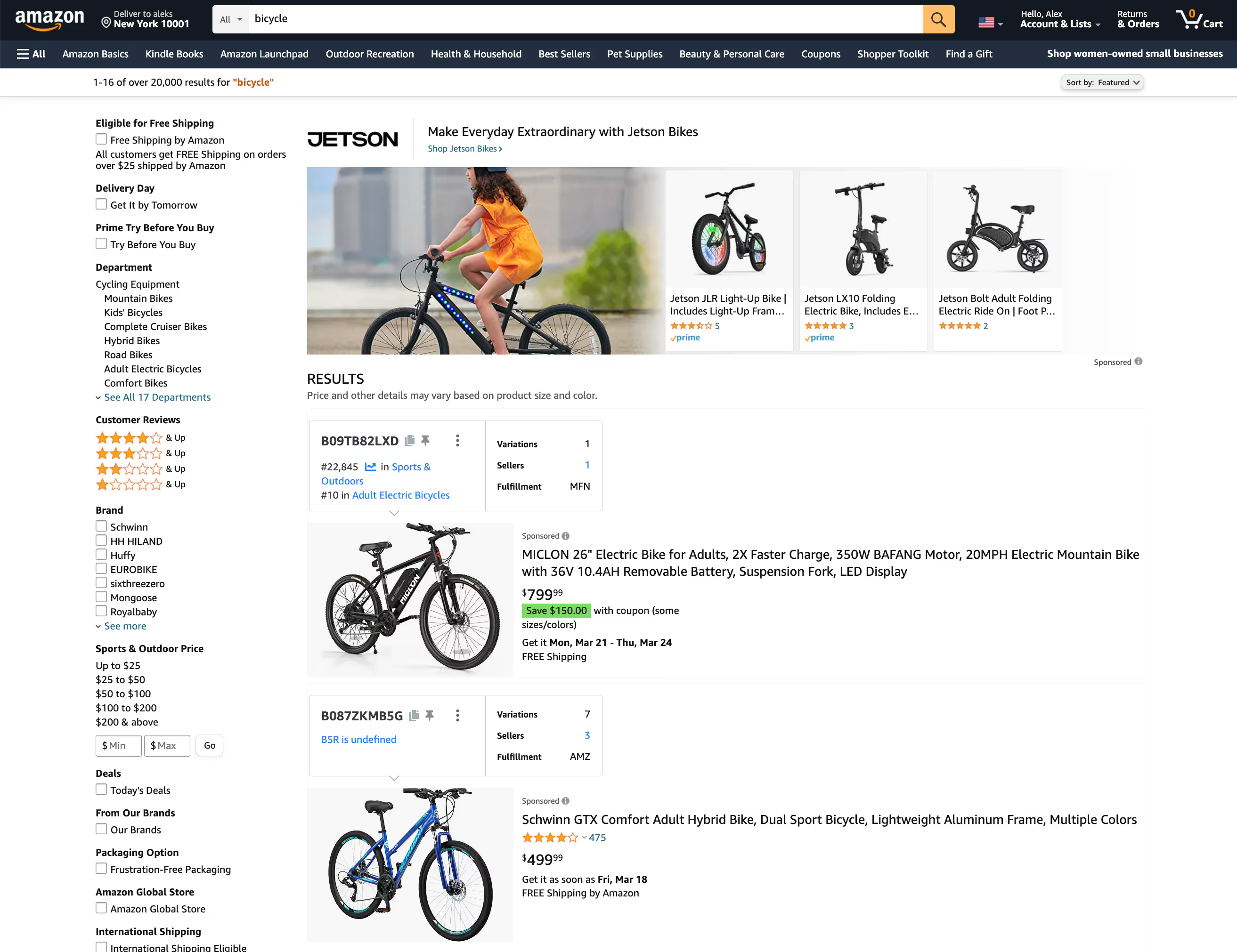
The results are then shown in one of two formats, list view (as seen above) or gallery view (as seen below).
The first page is limited to the top 15-16 products in the list view, but in the gallery view, around 24 products are displayed. You’ll want to search different keywords you’re using for your product to see which format your product listing will display in.

The next thing you’ll likely notice is the paid product ads displayed at the top of the results — both in the headline ads and mixed in with the organic results. Paid ads take a number of available slots on the first page of the results, especially for competitive keywords.
The final piece you’ll want to note is the search filters on the left side of the page. These filters help shoppers further narrow the product listings shown.
The search filters available for every product include:
- Free shipping
- Next day delivery
- Department
- Reviews
- Brand
- Price
- Deals
Other filters may include size, color, material, and more determined by the specific item. You can use all of the filters to guide pieces of your listing, like what long-tail keywords to include and even pricing.
For the search filters to work correctly, you need to ensure your listings are as accurate and detailed as possible. Remember, Amazon isn’t “seeing” your product, so the algorithm returns results based on the seller’s information.
Amazon filters example:

Customer search queries can be extremely detailed or very vague. For example, someone might simply search “scarf,” and another may search “kid’s winter scarf red” when they’re both looking for the same product.
If you are in a competitive niche you should try to include more long-tail keywords like "kid's winter scarf red" if your product is relevant. Longer tail keywords have better performance in terms of ROI in our expertize. The downside? They have less search volume.
The customer using the detailed search query may not need to use the filters, but those using broad terms may. You should be prepared for both.
How To Optimize Your Amazon SEO
Optimizing your Amazon SEO is more complex than assuming you know what your customers are searching for and adding those keywords to your product title and description.
It requires keyword research on your customers and competitors, as well as your keywords, before listing your product. You can check our detailed guide on how to perform Amazon keyword research like a seasoned pro.
Once you have done your research, then you can start to work on your on-page and backend optimization.
Let’s take a look at the process step-by-step.
Amazon SEO Pre-Optimization
Before you touch your product listing, you have to do some prep work. We’ll call this the pre-optimization stage.
The first step in pre-optimizing your SEO is knowing who you are trying to sell to and what they are searching for. Think like a customer. What would you search? Which product would you buy and why? Don't optimize your listings only for keywords, make sure you are relevant for them and you have a good product offer.
It also helps to know how your competitors are already positioning themselves in the marketplace and where your product fits in.
Competitor Analysis
Before you decided on your product, you likely did competitor analysis to see what other products were on the market and how they were being marketed or their unique selling proposition. You will need to use some of the information to optimize your product listing. Check our Definitive Guide to Amazon Listing Optimization if you want too learn how to do it like an 8-figure seller.
You’ll want to look for holes in the market that your product can potentially fill.
Or, more specifically, at this stage, holes in your competitor’s keyword strategy.
Ask yourself these questions when doing your competitor analysis:
- Does your product offer a critical feature that your competition doesn’t have? Maybe your product has more colorways or improved technical features.
- If competitor products are similar, what features or benefits are they not honing in on with their listing that you can use to differentiate or tap into a new market?
- What percentage of the market do your competitors currently have? Is there one competitor that is leading the pack, or is it split up between several brands? If it’s only one leading competitor, you need a major pivot in your marketing strategy because going head-to-head with a behemoth is generally a good way to waste a lot of resources.
- How does the pricing of your product compare to others that are similar? When you look on Amazon, the top-performing product listings are most often in the mid-range. Cheap pricing implies low quality, but high pricing is harder to justify.
- How are they positioned? Are they a premium brand or budget-friendly? Unless you have plans to push a brand marketing campaign, it will be tough to implement luxury pricing and have a competitive listing from the start.
- What keywords are they running ads for? If a successful competitor is running an ongoing campaign for a keyword, it’s generating sales. Be sure you’re checking back in on the competitor's ads to make sure the keyword wasn’t a test that didn’t pan out, though.
- What type of images are your competitors using on their product listings?
- What type of video ads is your competitors running to acquire new customers?
Also, look at how your competition is presenting the products in their listings.
Chances are they are successful for a reason, and you can learn a few things from their strategy.
Create Target Audiences & Buyer Personas
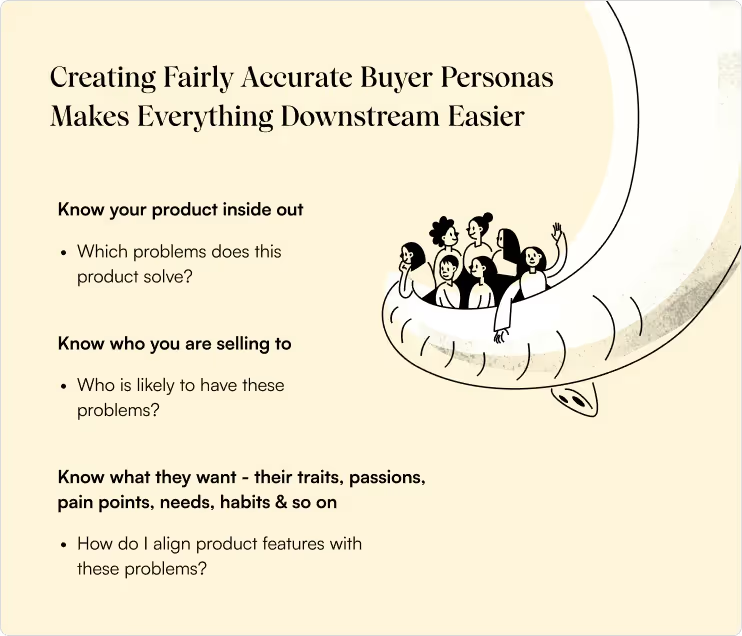
The audience is everything. To create listings that speak to your target audience, you need to determine:
- Who you are selling to (demographics)
- What problem they’re trying to solve
- What they care about
- Why they should trust you
- What information they need to have to buy
Once you can answer these questions, you’re off to a good start.
This part is essential once we get to the on-page optimization because it will inform how you write your product description, the types of photos you’ll want to include, and keywords you’ll want to target.
When developing your audience, you might have multiple buyer personas.
Buyer personas are more detailed variations of your general audience.
For example, a brand selling baby changing pads has a target audience of new moms but may have three buyer personas within that audience.
1. A first-time mom that has never needed a changing pad.
2. A first-time mom that is unhappy with her current changing pad.
3. A mom with other children who is looking for an upgraded changing pad.
You’ll want to know what each of those personas is typing in the search bar and need to see in your description to purchase your product. You’ll also need to consider the specific buying triggers of each persona.
The buying trigger for the mom that has never bought a changing pad might be around the safety features of your product, whereas the trigger for a mom unhappy with her current changing pad could be a product quality guarantee.
It’s your job to include the right buying triggers for each of your personas.
Pro tip: Look at reviews of other products your customer buys and see how they talk. It helps you to develop Voice of Customer data you can use in your product descriptions. Then you can speak to your customers in their own words.
Want to go after multiple audiences? Be sure you focus on adding one at a time, so your strategy doesn’t get muddled. You want to capture as much of the original audience as possible before pivoting, or you risk losing all your progress.
Amazon Keyword Research

We can’t talk about SEO and not talk about how to perform amazon keyword research like a seasoned pro, of course.
You need keywords in your product title, description, and the back end of your seller’s account.
We’ll go over how to set each of these up later, but you have to have your keywords data before we get there.
You can gather keywords data manually by typing in phrases you think your customers will use to find your product in the search bar and letting Amazon autosuggest do the work. Then, go to competitor and complementary product pages to look at what keywords they’re using.
Here’s a quick example:
In the Amazon search bar, type a broad product keyword – also known as a seed keyword – and jot down all of the long-tail keywords Amazon generates. Do this over and over until you’ve exhausted your list of initial keywords.

Then, go to the top listings that show up in the search results for these keywords. Note the keywords that you see in the title and the product descriptions as well. In the example below, you'll quickly notice that the listing is targeting: black umbrellas, rain umbrellas, umbrellas for rain, windproof umbrellas, and compact umbrellas (among other things).

You might be amazed at the number of keywords you can gather rather quickly from manual research.
Or you could use one of the many keyword tools on the market. We have a comprehensive post on the best Amazon SEO tools on the market you should check out.
A little of both types of research is a good idea to be sure you’re covering all your bases. But keep in mind that you need to spend time on Amazon and not rely solely on tools. Understanding how customers are using the marketplace will only help you optimize your listings.
Additionally, if you have your own site, you could also find out what you are ranking for on Google and target the same keywords on Amazon.
Finally, there are a handful of nuances you need to be aware of when choosing your keywords.
1. You don’t want to re-use a keyword in your listing. Instead, choose only one place to use a keyword — product title, description, or backend. You won’t boost your listing by adding it in more than one place, and you’ll waste your limited keyword space.
2. Amazon covers common misspellings, so you don’t need to add them as a keyword in hopes of covering typos.
3. Though compound words (ex: doghouse vs dog house) aren’t necessarily covered by Amazon and should both be added. This is an instance where you’ll want the correct spelling in your title or description and the incorrect spelling in the backend. You can also choose to use a hyphen to cover variations, but you may only want to choose this option for non-critical keywords.
4. Capitalizations, accents, and umlauts aren’t necessary.
It’s always smart to test your keywords on the marketplace as if you were a customer searching for your product. You’ll start to get a feel of how people phrase their search terms.
Tracking Keywords
Setting up keywords for your products is not a one-and-done task.
Amazon is constantly changing with new products, reviews, and even algorithm changes.
That means you have to keep up with your keywords.
You’ll want to track where you are ranking for each of your keywords at least weekly. There are tools that can help with this.
Helium 10 offers a keyword tracker as part of its suite of products that have received good reviews.
It’s important to discover early if your keywords starts to drop so you can act quickly to identify the problem and come up with a new strategy.
When you notice a decline in a keyword’s performance, it’s time to go hunting.
As customers’ language changes over time, a free tool like Google Trends can help you transition your listings.
You can use the tool to compare search volume over periods of time, and you can also see geographic information on where the searches are coming from.
Another way to look for shifting keywords is to seek out niche influencers and study their language to look for nuances that may affect your keywords’ performance. Find out what terms and features they are often mentioning.
For example, maybe you sell your product as a “camping backpack,” and niche influencers describe similar products as a “hiking pack” instead.
Price Setting
Price and SEO may not seem to go together, but on Amazon, they do. Anything that Amazon’s algorithm weighs needs to be considered in your Amazon SEO optimization.
There are two steps in price setting:
1. Determining what the market allows the price of your product to be.
2. Figuring out where you can afford to price your product to make a profit.
If your competitors have rock bottom prices, that’s what the market will expect. In this instance, you either have to demonstrate how your product is superior and worth more or accept that your profit margins will be slim on the product.
Hopefully, you have a product where this isn’t an issue. This brings us to the next step; what can you afford?
As a general rule, the price of your product needs to be at least 3-4 times what you pay for it. That allows you to cover fees for programs like FBA or packaging, as well as some marketing.
You’ll want to periodically test your pricing to find the sweet spot between attracting the maximum number of sales and reaching the optimal profit margin. But, of course, that number will be different for every product and will fluctuate over time.
Brand Building
The last thing you need to think about pre-optimization is brand building.
Some Amazon sellers choose to focus on resale or prefer the flexibility to sell a range of products across niches, so they don’t put much thought into branding.
But if that’s not your thing, you need to take steps to establish your brand immediately or risk being copied before you get a chance.
Registered brands on Amazon get listing perks, but it requires a trademark. Since trademarks take months, you need to get the process started.
The costs of building a brand are higher, but so are the rewards. Brands command higher prices and gain high lifetime value customers that come back again and again.
On-Page SEO Optimization for Amazon Product Listings
Now let’s get into why you’re reading this article – on-page optimization.
This is where you put all the background information into action to get your products in front of customers.
Amazon SEO encompasses five things for every listing:
- Product Title
- Product Bullet Points
- Backend Keywords
- Product Description (or A+ Content)
- Reviews and Q&A
To rank, you’ll need to optimize each of these pieces. You’ll also want to pay close attention to the images you’re choosing, and make sure they follow Amazon’s guidelines.
While optimizing your listing, keep the Amazon hierarchy in mind.
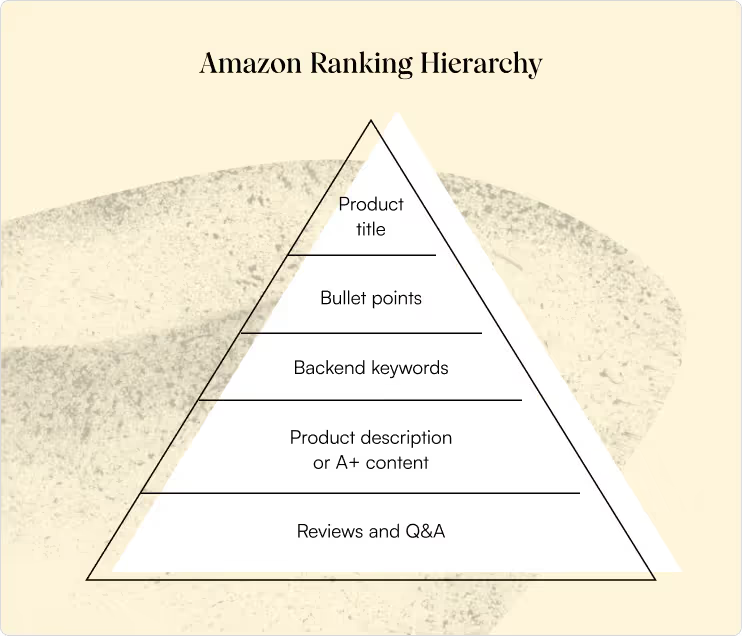
When you add a product listing, focus on perfecting your title and bullet points first because that’s what Amazon and your customers are basing a large part of their decisions on. Then, move on to the next pieces of your listing in order.
Optimizing Your Product Title
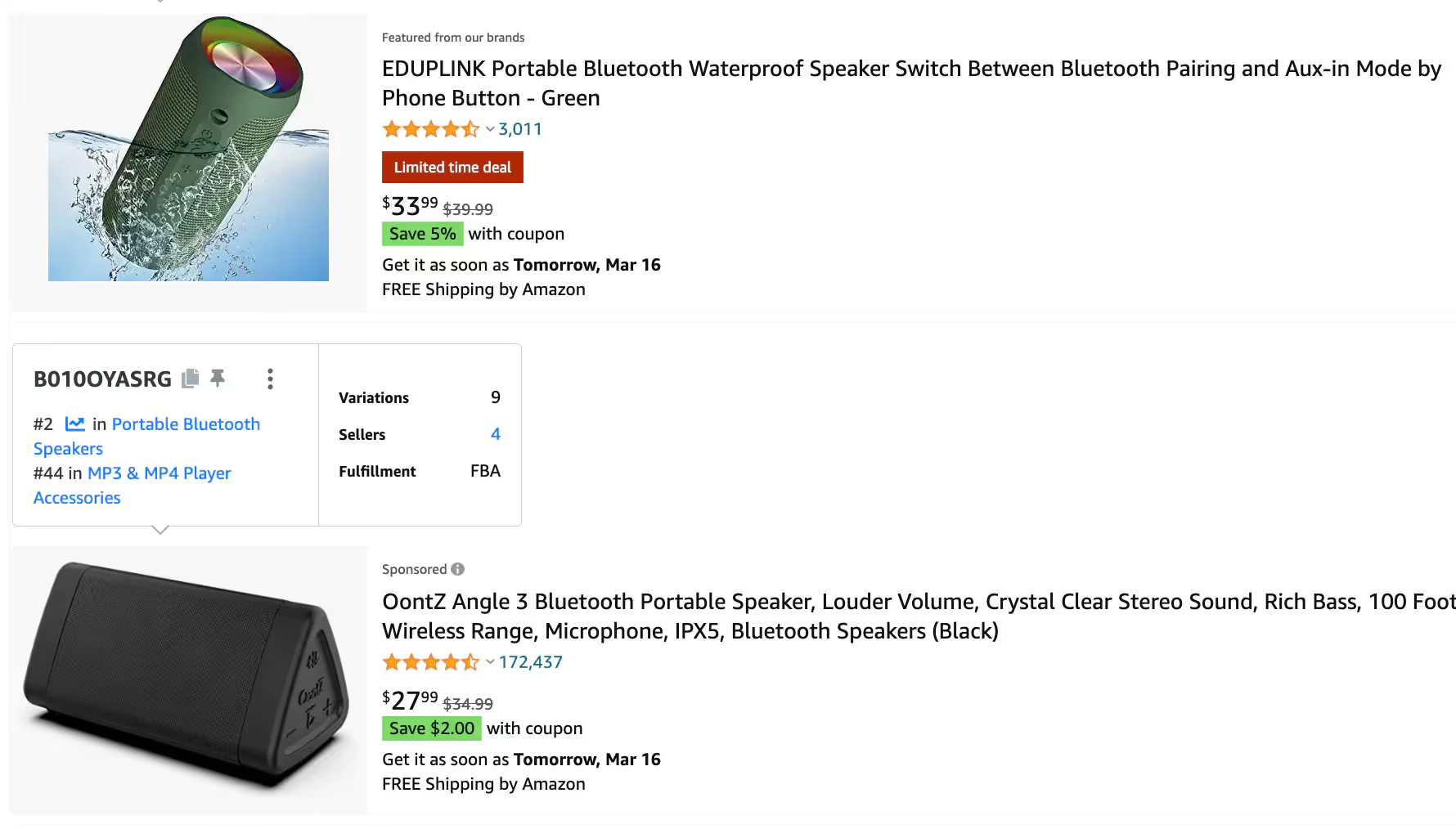
Your product title is the first information potential customers have about your product.
The product title and the main image are the two most prominent pieces of information shoppers have to go on to decide if they are going to click through to your product or not.
No click-through = No sale.
Think about what your customer needs to see in your product title to make them want to click.
Amazon recommends that you include your brand, type of product, material, color, and quantity.
Keep these factors in mind when developing your keyword title:
- Cannot exceed 200 characters (Mobile view only shows around 70 characters)
- Front-load the most valuable keywords in your product title
- Avoid keyword stuffing
- Review the Amazon Style Guide if you’re unsure
If your title is too short, it may not provide enough information. On the other hand, your title can get cut off if it’s too long on some screens.
Your best bet is to meet somewhere in the middle and be sure the first 5-7 words convey the most important parts of your product.
Bullet Points
Bullet points are the meat of your product description.
It’s where your customers can scan all the benefits of your product quickly.

What you want to remember about keywords in your bullets is that while they are essential, they are not the main focus.
The main focus is getting customers to purchase.
You don’t want to add keywords for the sake of adding keywords that take away from what the customer needs to see to buy your product.
Your bullets need to be user-focused, with keywords added in where they make sense.
When writing your bullet points, you need to realize that your customers aren’t buying the features of your product (generally). Instead, they are buying what those features mean – the benefits of your product.
If your headphones have a longer battery life than the competitors, don’t simply write “18-hour battery life”. Instead, write something like “18-hour battery life to keep you listening through your commute”.
Don’t assume your customer will infer the benefit, be sure to include it.
Make sure you are checking reviews on similar products before writing your bullets. You may find a common complaint that your product solves to add here.
Some other important factors you need to include in your bullets are any supplemental information with your product like how-to guides or recipe books, for example, and if your product comes with any form of guarantee.
Both of those build trust with your customers. Trust that your product will do what you say it will and that you will be there to help them if it doesn’t.
These pieces are vital for more expensive products and products that are new/possibly confusing to your audience.
Remember that each bullet has to be 200 bytes (not characters), so you’ll need to be clear and concise with your phrasing.
Backend Keywords
Your backend keywords are the keywords you can enter in your seller account that aren’t customer-facing.
Since your customers won’t see these keywords, this is where you can include audience or competitor-specific terms that don’t make sense in your product title or listing.

Backend keywords space is limited to 250 bytes, so you’ll need to be selective with what you enter. Remember that you don’t need to repeat keywords already used and don’t need to include punctuation or plural forms.
Be sure that the terms you choose make sense for your product. Just because your customer doesn’t see them doesn’t mean that you should enter a high-volume, unrelated keyword in the hopes of getting in front of more shoppers.
Product Descriptions
The standard product description is the small block of text under your product. You’ve probably noticed the lack of attention it receives on many listings.
But every part of your listing needs to be optimized, and Amazon uses the description to index your listing, so the product description should include relevant keywords that you haven’t already used in your title, bullets, or backend keywords.
More than anything, though, there are certain things you should NOT do in your product description.
- DON’T use it to talk about your company or brand.
- DON’T copy and paste the standard manufacturer description.
- DON’T create one giant wall of text that isn’t formatted, and no one wants to read.
- DON’T use ALL CAPS or random capitalization.
- DON’T forget to write a cohesive description. You want the full description to flow.
Go read product descriptions on reputable sites off of Amazon. The descriptions you’ll find are the same type of product description you should be using on your listing. Read your best competitors product listings too, you might discover keywords that you are not using.
A+ Content Optimization

If you are on the Brand Registry, you get to upgrade your product description through A+ content. A+ content enables you to bring your product description to life.
A+ content is like having a digital brochure to describe your product. Instead of the plain block of text, you can add enhanced images and text to tell a story and bring your product to life.
With your A+ content, you should aim to:
- Answer any product questions your customers may have
- Show your product in multiple settings/uses
- Build your brand representation
Even though Amazon gives you more control over your listing with the addition of A + content, you cannot use HTML to create your own custom content.
Your A+ content will come together through “modules.” The modules offered for A+ content are:
- Image and Light Text Overlay
- Single Image and Sidebar
- Single Image and Specs Detail
- Four Image Highlights
- Single Image and Highlights
- Comparison Chart
Images are critical and the main component of most A+ modules. Therefore, the copy should be short, easy to scan, and compliment the product photos.
It’s important to note that keywords are not valuable in A+ content as Amazon does not index them.
A+ is in place to help build your product up to get more conversions, which is a piece of the algorithm.
But for search purposes, make sure you add all your important keywords in the product title, bullets/description, and in your backend through your seller account.
Image Optimization
While a strong keyword strategy is the biggest part of Amazon SEO, don’t underestimate the importance of product images.
The images themselves aren’t indexed on Amazon, so they don’t directly affect SEO, but they do have a major indirect effect.
If your product images are poor, you will not get click-throughs, and you certainly won’t get sales.
And at that point, the best SEO strategy in the world will not keep you high in the search results.
Keep in mind everything matters, so make sure you have optimized everything possible to convert visitors into customers. High-quality product images are a game-changer.
1. Technical Requirements for Amazon Product Images
Amazon recommends that images be 1,600 pixels or larger in height or width (the longest side) and at least 500 pixels on the shortest side. They set this as the minimum size so that images can be zoomed in on, which has been shown to increase product sales.

JPEG format is preferred, but images can also be added in TIFF, PNG, or GIF.
Some categories (like clothing) have additional guidelines, and you’ll need to refer to the Amazon Style Guides for further information.
2. The Main Product Image
Your main product image is the image shown in the search results making the quality of this image especially important.
The main image should be your strongest image. The image should show your product in a way that makes your product’s features clear to the customer (if possible).
Amazon requires that your main product image:
- Be of your unpackaged product
- Have your product occupying 85-100% of the image
- Display only your product – no props allowed
- Be on a white background (RGB: 255, 255, 255)
- Include no text or graphics
If your click-through rates aren’t as high as you’d like, you should creatve A/B test for your main image to see if you get any improvement.
3. Additional Images on Your Product Page
You should use your additional product images to provide more visual context to your customers.
You’ll want to show your product from multiple angles or in different use states and include at least one up close photo that showcases its details.
Ideally, you’ll also include lifestyle images — images that show your product in its natural environment.
If you feel like your packaging will help sell your product, you could also include an image of your packaged product.
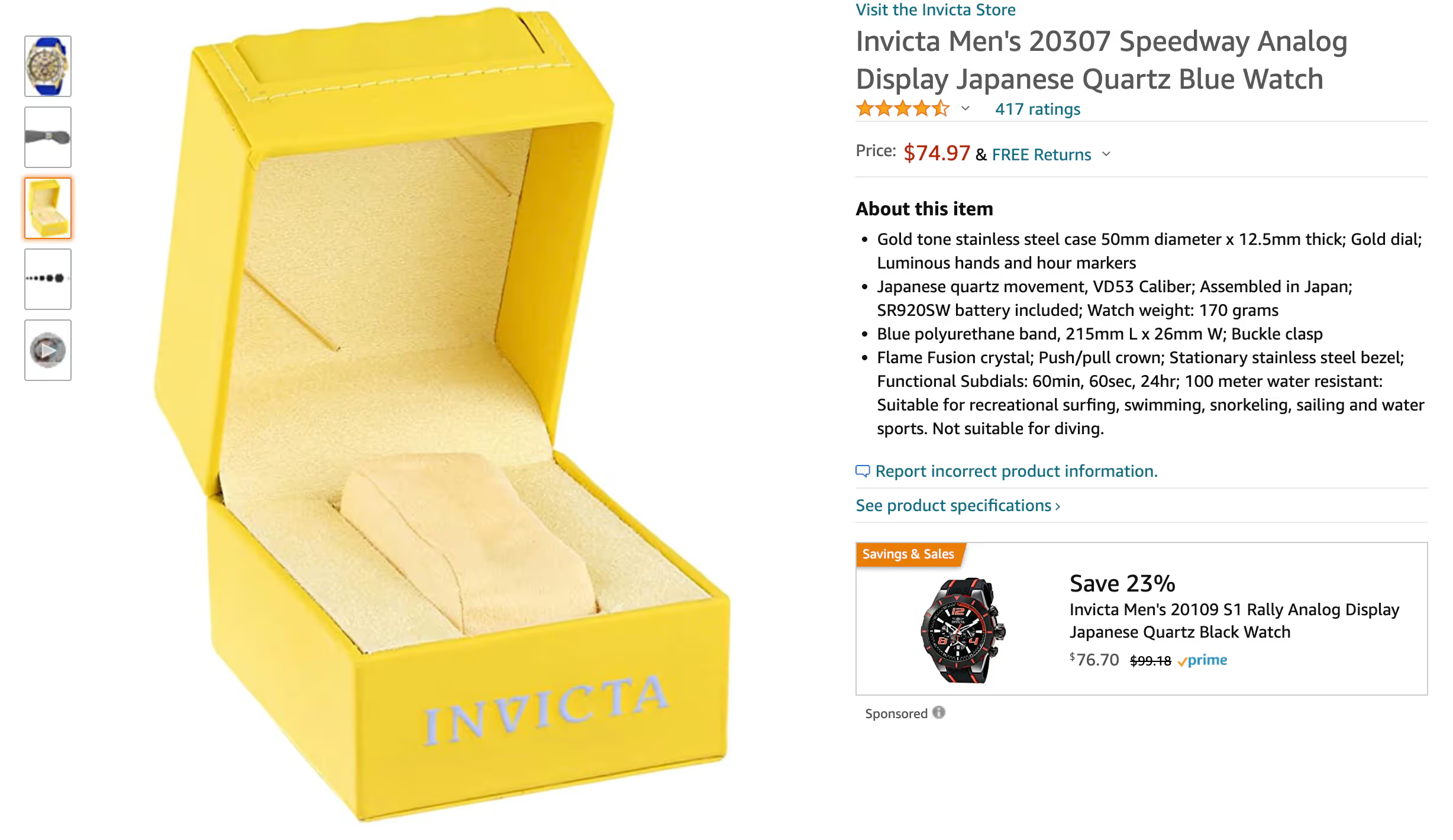
Benefits Imagery
Images that include explainer text often help customers make their decision.
These images are known as benefits-driven images.
Benefits-driven images point out a specific benefit of the product or explain a feature of the product to make the benefit more clear.

Often shoppers will look through your product images before they read your product description to determine if they think it will fit their needs.
Plain product images don’t allow you to grab your customer’s attention in the same way benefits-driven images do.
You’ll want to include a few of these images on your listing.
What Is The Amazon A9 Algorithm?

Amazon’s A9 algorithm was developed to operate as a search engine for products.
Amazon's mission was to create an algorithm that helps the platform to grow faster by increasing the number of transactions made. To make this happen, Amazon is making very quick decisions on which products to show first organically.
The algorithm will combine the keywords entered in your product titles, product descriptions, and backend keywords to find the most relevant matches to the shopper’s search term.
But since Amazon is a marketplace and sells products instead of providing information, there is an important distinction in its criteria beyond the keywords. Amazon’s A9 algorithm looks at other elements that they believe are most likely to result in sales.
Amazon gets paid once a sale is made, so they aim to place the products most likely to get a shopper to hit “add to cart” and purchase.
A9 works in two steps.
The first is filtering products by their keywords, and the second step is weighing in the factors Amazon considers most likely to get sales, such as past product performance.

What Factors Influence the A9’s Search Rankings
Amazon hasn’t released the data on everything that is included in their algorithm.
They aren’t going to give away their secrets to other companies or make it easier for sellers to “hack” their way into ranking higher. However, what we found is the more you sell, the higher you rank organically. So aim to improve your sales velocity and create amazing product offers for your ideal audience.
We do know a few of the factors that are considered for sure and can assume quite a few others based on past results.

Explicit
We know that the following factors influence Amazon’s search rankings (because Amazon has said as much):
- Keywords – Without keywords, A9 doesn’t know how to categorize your product. Amazon wants to put the most relevant products to the search in front of customers, and the algorithm uses keywords to determine relevance. This is why keywords can make or break your listing.
- Stock – Amazon prefers products that are kept in stock, preferably enrolled in the FBA program. If your product goes out of stock for weeks to months at a time, it tells Amazon that you don’t have a reliable supply chain. Amazon has built its business on getting goods into consumers’ hands as quickly as possible, so they reward sellers that share the same sentiment.
- Delivery Time – Amazon favors products that are Prime eligible. Building on the point above, Amazon likes to control the delivery process so they can ensure customer satisfaction. Instead of allowing every seller to ship their products whenever they get a chance, Amazon operates warehouses to handle storing, picking, packing, and shipping. These warehouses give sellers the opportunity to tap into the marketplace’s massive infrastructure and, as a bonus reward, improve their standing.
- Price – If your product’s price is significantly higher than others within the same category, it will hurt your ranking. Products that fall within the mid-range of the competition tend to fare well in the search results.
Implicit
We assume that Amazon’s considers the following factors in its rankings:
- Click-Through Rates – If a listing doesn’t encourage shoppers to click-through, it signals to the algorithm that something doesn’t match what the shopper is looking for. So product listings with no interest are going to decrease in rank over time.
- Sales Performance – Product listings that don’t convert don’t make Amazon money. It’s assumed that sales performance is weighed heavily in the algorithm. What’s less clear is all sales are weighted equally, but we’ll cover that more in-depth later.
- Customer Reviews – Reviews have undoubtedly been one of the most prominent sticking points for new products. Shoppers hesitate to purchase a product that doesn’t have at least double-digit reviews, especially if similar products listed have them. Amazon knows this and uses reviews as part of its ranking determination.
- External Traffic – It’s difficult to say how much Amazon considers external traffic in its algorithm, but considering the massive affiliate network the marketplace operates, it’s safe to assume the algorithm looks at it as a factor. If you’re trying to get to the top spot in the search results, getting some external links to your product listing surely won’t hurt your efforts.
- PPC Campaigns – Paid advertising is typically not considered when looking at SEO, but on Amazon, it has to be. PPC campaigns get your product listings in front of customers to give you a chance to gain things like click-throughs, sales, and reviews that are factored into organic ranking. Because of the competitiveness, paid search cannot be completely ignored in the SEO process. Keep in mind, as mentioned earlier, the more you sell the higher you rank.
Only Amazon knows how the different factors are weighted within the algorithm, and they aren’t telling. This means we have to work with the information available to optimize our listings, including testing keywords for our products.
While traditionally, many of these elements wouldn’t be considered as “SEO,” what we really care about is ranking. Ranking is part standard SEO – which we’ll thoroughly cover – and part lifting SEO tactics.
Amazon's two-step process to rank products organically.

Amazon SEO vs Google SEO

You might be thinking SEO is SEO, right? But that’s not how it works. The Amazon algorithm and the Google algorithm don’t operate in the same way because they don’t serve the same purpose.
Google is built on providing information, whereas Amazon is providing strictly buying opportunities. Google has to work much harder to figure out what a user is looking for based on just a few words; Amazon just focuses on matching the user to the best products.
Interestingly, if you type in a search term that Google believes has high buyer intent, it sends the users to Amazon, as demonstrated by the first organic search result in the image below.

This is why you need to focus on resources that teach Amazon SEO specifically to stay clear of any well-meaning but inaccurate advice.
The two biggest differences you need to keep in mind are:
Keyword density – Gone are the days of keyword stuffing, but keyword density still matters in the Google algorithm. If you mention a keyword once in 3,000 words, the article probably isn’t going to rank. But on Amazon, once is all you need. In fact, using a unique keyword multiple times is a waste, which we’ll cover more later.
CTR vs CVR – Google rewards the click, Amazon rewards the conversion. Yes, Amazon does look at click-through rates, but if you have a massive amount of clicks and low conversions, Amazon will not push your product listing to the top of the search. This is because Amazon wants product listings that result in sales above everything else.
There are several other minor differences between Google and Amazon SEO, but if you keep the two big ones in mind and follow this guide, you’ll be fine.
Building Amazon Reviews
While we’ve covered the pre-optimization process and optimizing each piece of your product listing, it doesn’t stop there.
Whether reviews are technically part of SEO or not, Amazon reviews matter. But, unlike social media likes, they aren’t a vanity metric.
Not only does the algorithm take into consideration product reviews, so do your potential customers. Therefore, building product reviews just cannot be ignored.
Let’s cover a few of the main points.
1. Amazon reviews influence where your product ranks in the search.
Product reviews are one of the suspected indirect ranking factors. And because your product rating, or an average of your reviews, is shown in the search results, it impacts your CTR and sales performance — both also factors in product rank.
2. How to increase the number of Amazon reviews for your products
There are a couple of options for increasing your product reviews. First, if you are just starting and are a Registered Brand, you could try the Amazon Vine program.
In general, though, customers are more likely to give you a review if you provide a stellar product with friendly and helpful customer service when they need it.
3. How to increase your product rating
The best way to increase a product rating is to interact with the feedback you receive from your customers or potential customers. Answer all product questions kindly and promptly. Respond to both positive and negative customer reviews, especially negative customer reviews.
You need to show prospective customers that you stand behind your product. This helps products with limited and/or some negative reviews.

4. Send post-purchase emails to receive reviews
This is one of the most powerful strategies we use on a day to day basis. You can set that up through Helium10 or any other tool. Make sure you are not asking for "positive or 5-star review" from your customers since this is against the policy on Amazon.
Ranking on Google and Amazon
Yes, this article is about Amazon SEO, but why not rank in both Amazon and Google?
Given Amazon’s high domain authority, many of the products listed there are shown in Google results.
Google results will include your customer ratings, so you’ll want to be sure you are generating positive reviews to help you get the click-through.
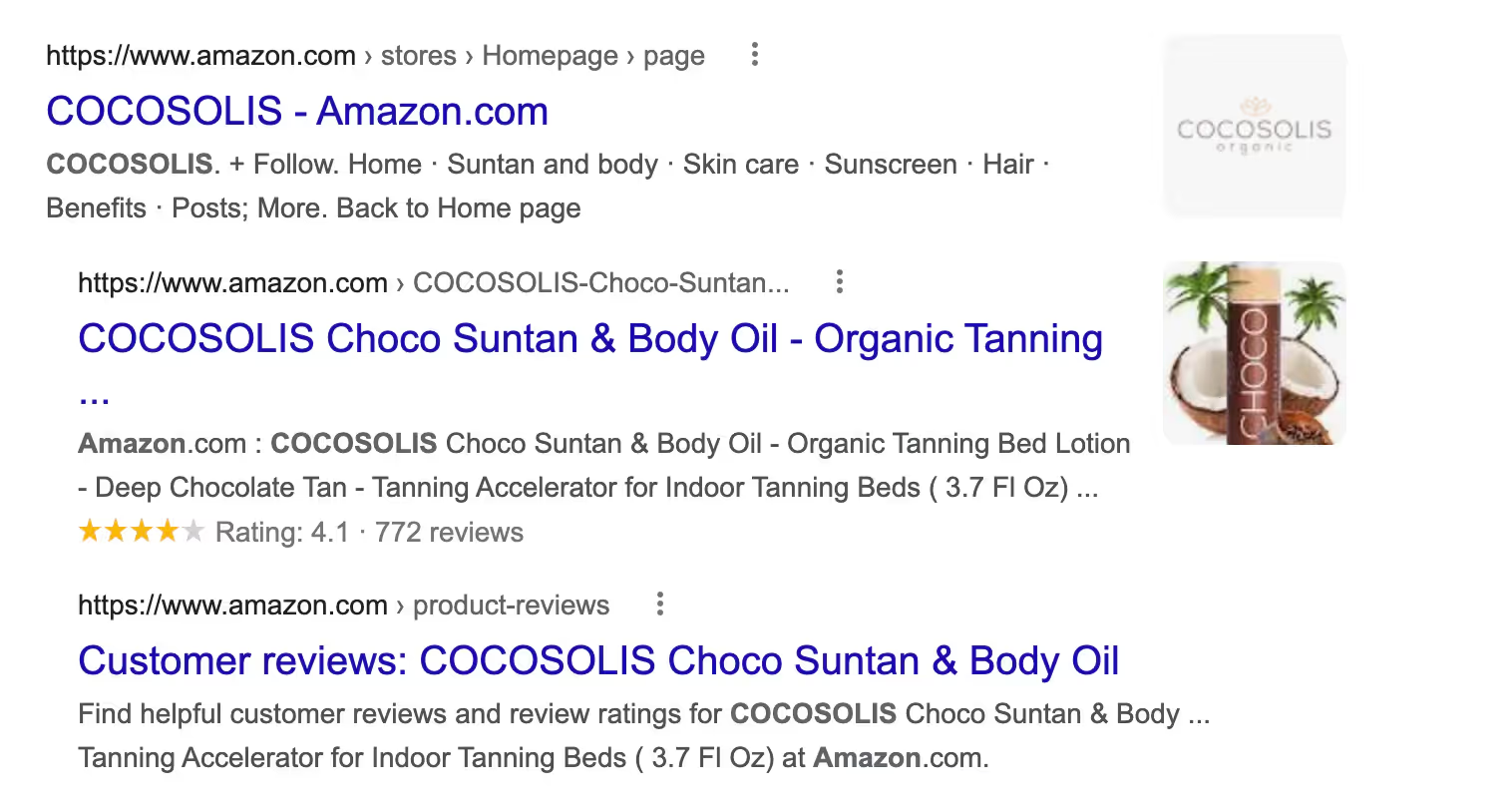
To help your products show up in the Google results, you’ll want to be sure you include your top keywords in the front of your product title so that they are included in the URL of your listing.
When doing your initial keyword research, you can also check popular terms entered in Google that start with “Amazon” and try to include them in your product title if they are a good fit.
Let’s say you sell LED lights. You can go to Google and type “Amazon LED” and see what long-tail keyword suggestions come up.

Optimizing Listings for Alexa
The future of shopping is voice. Amazon’s Alexa is going to be ingrained into the customer experience.
In fact, when shopping in the app, Amazon is encouraging shoppers to use Alexa instead of their keyboard.
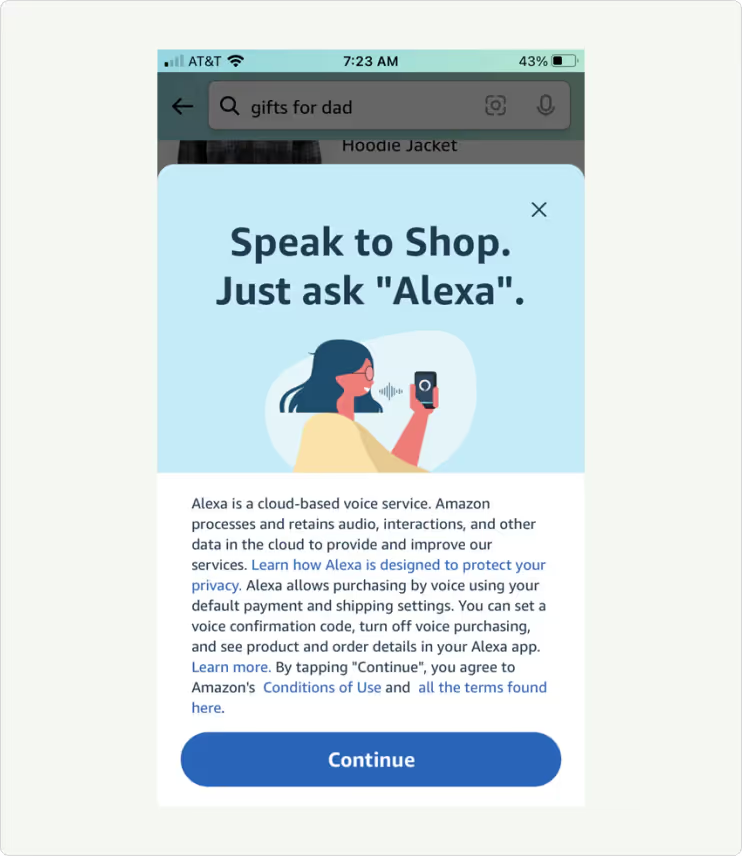
Why does this matter for choosing your product keywords?
Because how we speak and how we type are not always the same. I might type “men’s sweater” and then decide I want to refine it, so I add “black” to the end — making it “men’s sweater black.” It’s easier to add a word than to re-type the entire phrase.
But what if I were to speak it instead? At that point, the chances are high that I’d change the entire search query to “men’s black sweater” because it’s not more effort, and it fits a natural speech pattern.
You can start preparing for voice by paying attention to your own speech patterns. Try to use Alexa next time you’re doing some personal shopping on Amazon and see how your search queries change and how they compare to current auto-generated queries.
Troubleshooting a Lack of Keyword-Driven Sales
The whole purpose of learning Amazon SEO is to build organic sales.
You want to increase sales generated by keywords to lower your ACoS and possibly offset the cost of ads.
There is no overnight secret to sales through Amazon SEO. You have to do the background work and let it build over time.
You have to do the basics well, or you have no foundation to build on.
If you have followed the steps outlined in this guide but aren’t seeing an increase in sales from keywords, look at these things first:
Keyword Performance
If the keywords you started with aren’t producing results, it’s time to test new ones. This goes back to the keyword tracking we talked about in the pre-optimization section. Again, you’ll need to look for changing trends in how your audience is searching for your products.
Don’t see any changes that would affect your listings? You may not have the right product-market fit, or the market just may not have enough demand for you to scale. You’ll need to go back to the drawing board, starting with competitor and audience research, and try to hone where your product fits in.
Performance Metrics
Maybe your keywords are getting you clicks, but you aren’t getting conversions. At this point, you should look at how your product description is written. They need to be benefits-focused and not keyword-focused. You also want to look at your product photos and reviews and compare them against competitor listings to see how they stack up.
Go through your listing piece by piece and start testing. You want to make one change at a time so you can track what is and isn’t working.
If you’re an Amazon Registered Brand, you can even run experiments – A/B testing – on your content.
Prime Eligibility and Other Algorithm Considerations
After you’ve ruled out your keywords, descriptions, photos, and reviews as the reason you aren’t gaining momentum, you have to look at your listing from Amazon’s perspective.
Amazon wants your product to be priced similarly to other products like yours. It also wants your products to be kept in stock and Prime eligible, ideally through the FBA program.
The FBA program is the only way Amazon can verify how many products are available and also control packaging and shipping.
While not the most important aspects, all of those pieces help drive sales and make Amazon more money. If your products are missing the mark, that may be part of the issue, especially if most of your competitors take extra steps.
Types of Sales
Maybe you are getting sales, but not through organic search results.
It’s important to understand that there are three ways an Amazon sale occurs:
- Sales generated through organic search
- Sales generated through PPC campaigns or discounts
- Sales generated through off-site affiliate links
If you’re using third-party affiliate sites to promote your product, and that’s where your sales are coming from, but shoppers aren’t clicking on your listing in the organic results, Amazon likely isn’t going to weigh the sales as much in the algorithm.
So, yes, sales will impact your ranking, but to some degree, the way you get the sale will always play a part. Try to use your paid marketing to improve your SEO strategy to get more organic sales – not to replace them – if your goal is to improve where you land in the search results.
Amazon Choice and Best Seller Badges

Another way to get more keyword-driven sales is to obtain an Amazon Choice or Best Seller badge.
Of course, these badges are up to Amazon’s discretion, but if you can snag one, it can complement your SEO efforts to drive sales.
The difference between the two is that the Best Seller badge is based on sales, but the Amazon Choice badge is based on several factors, like price, reviews, and Prime eligibility status, that Amazon thinks makes the product one of the best choices for the keyword.
Check out our in-depth article on the Amazon Choice badge to help you understand what it is and ways to increase the likelihood of getting one for your listing.
With Amazon, you need to focus on gaining momentum somewhere – even if it’s not with SEO at first – to tap into the flywheel effect. Once you’ve got it, sales get much easier.
Amazon Flywheel

The Amazon flywheel is a powerful force once you tap into it. So if you’ve never heard of the Amazon flywheel, let us introduce you.
A flywheel is propelled by its own momentum, and you can establish the same force for your listing.
Amazon itself is successful due to the flywheel model. It started by offering third-party sellers with a wide range of products a new marketplace to sell on, and then it used those sellers to attract customers, who then gave rave reviews to attract more traffic. The more sellers with varying products it gained, the larger the customer base it accumulated, and the more traffic, the more sellers wanted in on the action.
And now Amazon has millions of products and customers.
For sellers, it all starts with marketing your product listing – whether that be organic, paid, or both – to get an initial burst of sales.
Those sales lead to Amazon’s algorithm ranking your product higher in the search results, gaining you even more sales and the resources to up your marketing. The cycle continues until your listing is in a prime ranking spot, allowing the listing to become primarily self-sufficient and letting you focus on building up your next listing.
Before you put your effort into creating a flywheel, though, you have to optimize your listing, especially your SEO. Otherwise, you’re going to limit how much momentum your listing can gain.
If one piece of the flywheel is broken, it doesn’t work. For example, you can have the best SEO strategy, but the flywheel will fall apart if your listing doesn’t convert customers.
On Amazon, it’s important to note that your paid marketing is often the biggest fuel to your organic growth — because of the flywheel effect.
SEO vs PPC Keyword Optimization
While Amazon PPC and SEO are two separate things, they revolve around the same center — keywords.
But the keywords in your listing for SEO purposes may not be the exact keywords you use in your PPC campaigns.

In fact, sellers often use PPC to better inform their SEO strategy.
When you rely solely on organic SEO for sales, you’re really restricted to a “best guess” strategy. Amazon doesn’t provide you detailed information on what keywords are driving each sale and, unless you’re regularly testing new keywords in your listing, you don’t know if there are stronger keywords out there you should be using.
On the other hand, Amazon rewards its sellers using PPC campaigns by providing informative reports on what keywords are and are not working. Sellers then use those keywords to create better organic listings.
Let’s think about it in action.
Say you’re adding a brand new listing. It’s for a competitive product, so you need to lean into long-tail keywords to get any traction. But, if you’re counting on organic SEO, how do you know which of the possibly hundreds of long-tail keywords are worth going after?
You have two choices in the scenario:
1) Spend months tweaking and testing until you start to see what works.
2) Invest money in Amazon PPC campaigns and find your keywords in a fraction of the time.
Using the two strategies in unison is where listings see the most growth. Essentially, PPC is the best strategy for getting an instant boost, whereas SEO is a long-term game, but each fuels the success of the other.
No matter which you’re leaning into right now, Amazon listing optimization should be your first step.
Final Thoughts
Now you’re ready to improve your product’s ranking.
You’ll need to take the time to start with solid keywords and continue to stay on top of them and their performance.
Don’t forget that while keywords are the basis of Amazon SEO, the algorithm considers much more when determining rank. And that requires your entire listing, including product images, to be top-notch.
It will take some time to see your Amazon SEO efforts pay off, but that’s part of building organic sales.
Need a marketing partner to help your growth? Work with our Amazon Marketing Agency and let's scale your brand faster on Amazon.













.webp)

.webp)








.webp)










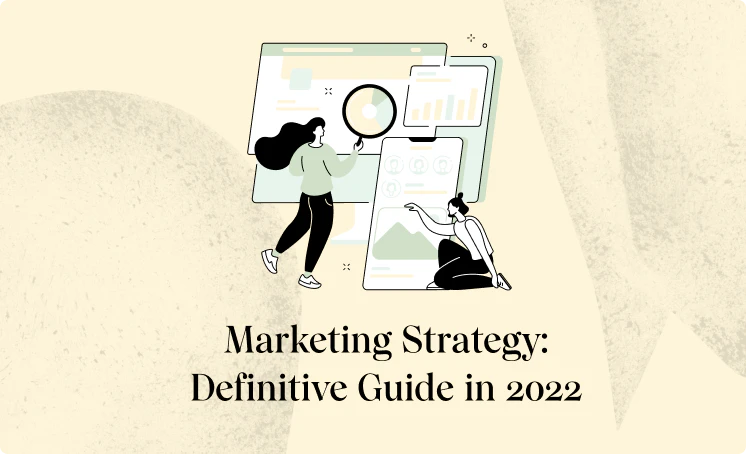

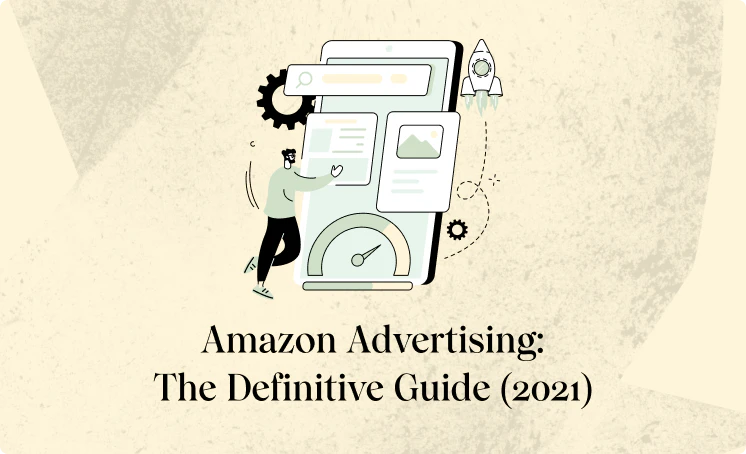





























.webp)





